The capital of the United States is home to a massive collection of museums, monuments, and history, most of which are free to the public. Spending a weekend in Washington means endless opportunities for the whole family without breaking the bank.
If you’re looking for a cheap city break, I’ve put together this list of the best free things to do in Washington DC for you. So, let’s dive into DC!
Where to stay in Washington, DC
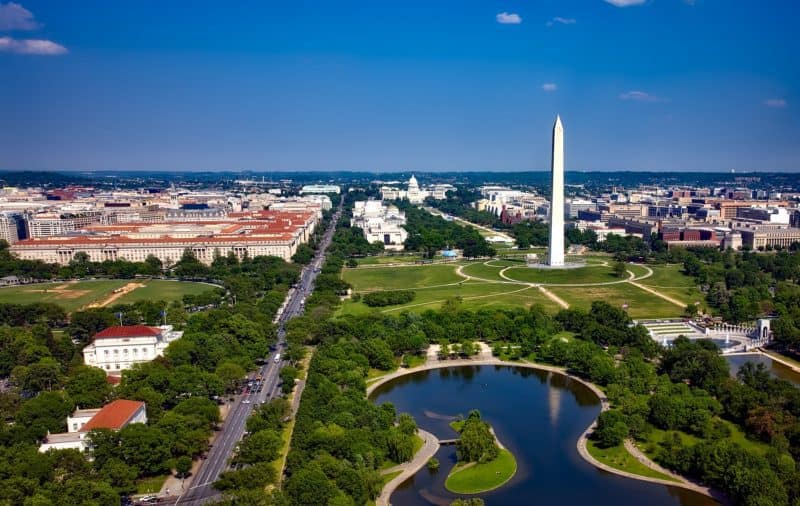
Regardless of your budget, you’re going to need a place to stay if you plan to spend a weekend in Washington. Fortunately, Washington, DC is easy to navigate. You can explore the nation’s capital using the metro, which stretches beyond its 68.34 square miles into Virginia and Maryland.
If you want a hotel in DC but don’t want to drive through the horrible traffic, choosing a hotel near the DC metro lines will make your life a lot easier. You’ll save some money too, because parking rates are high and spots can be hard to find.
To save some money without really compromising on convenience, stay in the outskirts. Arlington, Virginia is a convenient place to stay and has cheaper hotels. Not only that, but you’ll enjoy easy access to metros that can take you into the heart of DC.
1. Stroll the National Mall
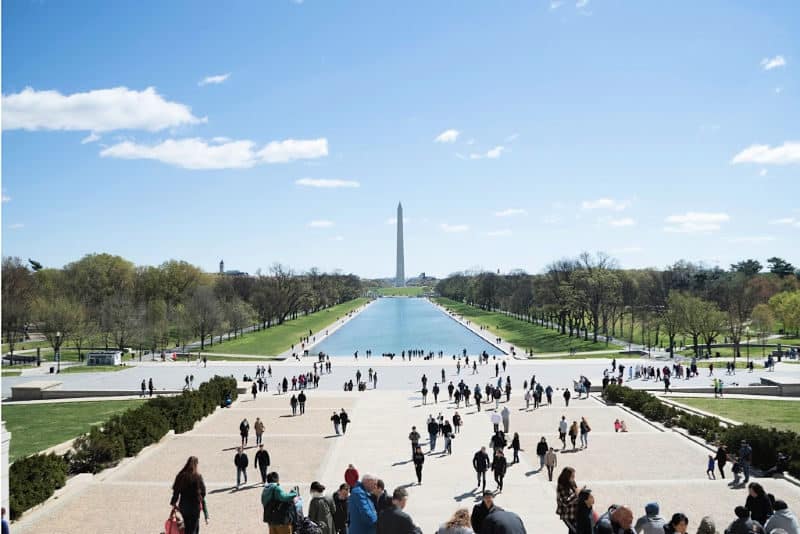
Okay. Now that you have a home base and a way to get around, my first suggestion is to visit the National Mall.
Sorry, shoppers. The National Mall isn’t a shopping mall. It’s a massive park that stretches all the way from the Capitol Building on the east side to the Lincoln Memorial on the west.
This is where most of Washington’s best attractions are located, and it’s jam-packed with free museums and sightseeing opportunities.
What I love most about the National Mall area is the fact that so many of the free things to do in DC are only a hop, skip, and jump away.
2. Uncover wonders at the Smithsonian Museums
The Smithsonian is one the most fun things to do in Washington DC, thanks to the many different types of museums available to visitors.
Named for its founder, British scientist James Smithson, the Smithsonian Institution is a group of museums and research centers administered by the United States government. There are so many items in its collections that they can’t fit into one building.
And even with multiple buildings, they can only display a fraction of the artifacts at any one time. Most of their items are in storage!
Sensibly, they have grouped their collections by topic. No matter what you’re interested in—science, history, or art—the Smithsonian has something for you.
This works out well if you’re visiting Washington because you can spend your time in museums that interest you.
Some of the best museums in Washington include:
- National Museum of American History
- National Museum of Natural History
- National Air and Space Museum
- National Gallery of Art
- National Museum of African American History and Culture
- National Museum of Asian Art
- US Botanic Gardens
- Enid A. Haupt Garden
- National Museum of the American Indian
- United States Holocaust Museum
- Smithsonian Castle
- Hirshhorn Museum and Sculpture Garden
- U.S. Bureau of Engraving and Printing
Even better, all the museums on the National Mall are close together. You won’t have to walk far to get from place to place, which can be a godsend in bad weather.
Many of these museums are extremely popular and can be very crowded.
Oh, and did I mention that all these museums are totally free?
ⓘ PRO TIP: Some museums offer guided tours at certain times of the day. If you aren’t fond of going with a group, Get Your Guide offers private tours as well. Learn more here.
3. Witness democracy at the Capitol Building

No weekend in DC would be complete without a visit to one of the most impressive and important buildings in the world: the Capitol Building. It houses the United States Congress and serves as a meeting place for the House of Representatives.
Here’s an interesting fact: The view you get as you approach the Capitol Building from the National Mall is the rear of the building. The main entrance to the structure is really located on the other side.
Although it may seem strange at first, there was a good reason for it: When it was being built, the ground on the eastern side was more level. Their logic was that it would be more practical for travelers to enter from that side.
Thomas Jefferson originally pitched the building’s design as a contest with a $500 prize (equivalent to around $14,000 in today’s money). The design was finalized based on William Thornton’s entry.
Since then, the Capitol Building faced many hardships, changes, and destruction. During the War of 1812, constant raids and fires gutted the inside of the building. It would have been lost if the fires hadn’t been put out by a lucky storm. The building has been rebuilt many times, which is why it now symbolizes perseverance.

A word of warning to those looking to visit, though: Tour spots fill up fast and the ticket line is long. In the spring and summer, it’s almost impossible to get same-day tour passes, unless you arrive first thing in the morning. That’s why I always recommend booking a tour ahead of time. No one likes massive crowds and long waits!
Here are some tour options to consider:
- Washington DC: Capitol Building and Capitol Hill Walk
- Washington DC 8-Hour VIP Tour with US Capitol Priority Entry
- Washington DC Half-Day Tour with US Capitol Priority Access
If you don’t care about getting inside, you can book a guided walking tour of the area instead. You’ll see the exterior of the Capitol Building and Supreme Court, the main reading room of the Library of Congress, and the Thomas Jefferson Library, which features a real Gutenberg Bible. Learn more here.
4. Soar up the Washington Monument
Next, on our list of free things to do in DC, we have the iconic Washington Monument.
Even from a distance, you can see the 555-foot high obelisk dedicated to the first president of the United States. Up close, the obelisk is massive, with two shades of stone from the bottom half to the top half.


It turns out the monument dedicated to George Washington had undergone changes and trials of its own, just like with the Capitol Building.
Here are a few interesting facts about the monument:
- Plans for the monument started even before Washington was president, to commemorate when he was Commander-in-Chief of the American Army during the Revolutionary War.
- George Washington originally scrapped the idea of having a monument built for him, to save federal money.
- Originally, the building was supposed to seem like a temple or pantheon, with an obelisk in the center and huge statues surrounding it. That plan was scrapped when tastes in architecture changed.
- It took over 100 years for the monument to be completed.
As an added bonus, the monument has an elevator that visitors can use to reach the observation deck, where they can take in breathtaking views of Washington, DC from 500 feet above ground.
Ten feet below the observation deck, there’s also a small museum dedicated to the first president.
5. Reflect at the Lincoln Memorial
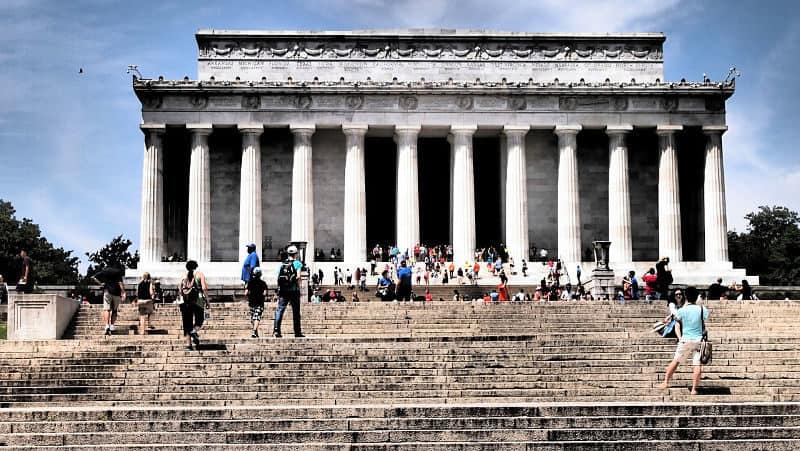
The Lincoln Memorial is another Washington DC weekend must-see, a symbol representing America’s beloved 16th president Abraham Lincoln and race relations.
With a large, seated Lincoln, the base houses an inscription of two of his most iconic speeches: the Gettysburg Address and his second inaugural address, near the end of the civil war and slavery. Dr Martin Luther King stated his famous “I Have a Dream” speech here.
Walking from the Washington Monument to the Lincoln Memorial, you will pass the reflecting pool full of ducks and geese. Hold your nose – the water doesn’t smell too good – but it’s positively picture-worthy from either end. Reaching the base of the memorial, you’re greeted by tons of people, mostly tourists, taking pictures and relaxing on the steps.
Walking up the steps, you may find yourself feeling a little bit like Rocky Balboa (even though those steps are actually in Philadelphia). Greeted by Lincoln, the main structure is incredibly beautiful and gives a great view of the reflecting pool and the Washington Monument.
Even better, see it at night, when the lights make the exterior glow. The inside lighting is brightest on the statue of Lincoln too, making it even more awe-inspiring and strangely calming.
ⓘ PRO TIP: Security doesn’t allow anyone to have any beverages here, so throw your water or soda away before you walk up the steps.
6. Admire the iconic White House
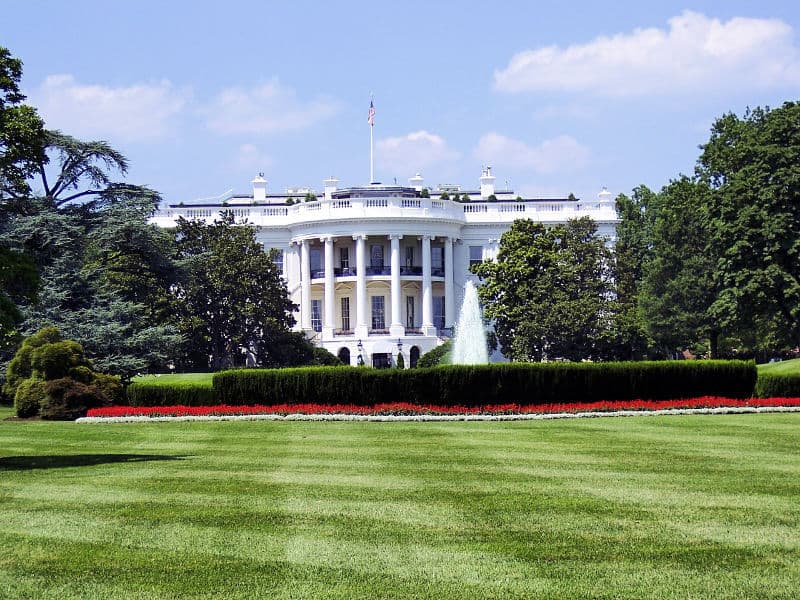
It wouldn’t be a trip to DC without visiting the White House and it does make for a great photo! Originally called the “President’s Palace,” it was officially renamed the “Executive Mansion” in 1810 to avoid connotations of royalty. The term “White House” became the official name of the building in 1901 when it was adopted by President Theodore Roosevelt.
White House Tour Checklist:
- Free Tickets: Contact your Member of Congress 21-90 days in advance.
- When to Go: Tuesdays-Saturdays, 9:30 AM-12:30 PM (except holidays).
- Be Flexible: Schedules can change due to weather or official events.
- Maximize Your Chances: Contact both Senators and your Representative. Staff efficiency varies.
Beyond the guided tours, the White House provides other free activities such as visiting the White House Visitor Center with its interactive exhibits, strolling the South Lawn for photo opportunities, following the self-guided White House Historical Trail, and enjoying President’s Park for picnics and views of the White House and Washington Monument.
7. Honor heroes at Arlington National Cemetery

Your Washington weekend trip needs just one more activity to be complete. Right across the Lincoln Memorial, on the other side of the Potomac River, is Arlington National Cemetery. Technically it’s located in Arlington, Virginia, but like all major institutions, it has a DC address.
Arlington Cemetery is the burial site of many historical figures and military personnel who continued to fight and pave the way for the freedom of the United States and its people.
Arlington Cemetery is 624 acres with over 400,000 graves, so getting lost is very possible. Thankfully, if you start at the welcome center, you can grab a map and get a brief history lesson about the cemetery.
When entering the cemetery, you’ll almost certainly be screened by security. Nothing to worry about. The cemetery is run by the United States Department of the Army and routinely requires security screenings for safety reasons.
Pay respects at the Kennedy gravesite

One of the most famous sites to visit at the Arlington Cemetery is the John F. Kennedy gravesite. The 35th president is one of only two presidents to have been buried in Arlington (the other being William Howard Taft). At his grave are plaques for him, his wife Jacqueline and their daughter; as well as the John F. Kennedy eternal flame.
Witness tribute at the Tomb of the Unknown Soldiers

The cemetery also houses the Arlington Memorial Amphitheater, a huge and beautiful amphitheater used for state funerals, speeches as well as Memorial Day and Veterans Day ceremonies. Connected to the amphitheater, is also the Tomb of the Unknowns (or Tomb of the Unknown Soldiers), dedicated to armed servicemen who died unidentified through military conflict.
The tomb is protected by guards 24/7, through drenching thunderstorms, frigid blizzards, and blazing heat waves. It’s awe-inspiring to see the dedication that the soldiers have … and only a small percentage of soldiers are allowed to protect the tomb.
Surrounding the Amphitheater and Tomb of the Unknowns are:
- The Korean War Contemplative Bench
- Space Shuttle Columbia Memorial
- Audie Murphy Gravesite
- Joe Louis gravesite
- USS Maine Mast Memorial
Discover history at Arlington House
Up on a high hill in the middle of the cemetery is a Greek Revival mansion known as Arlington House, or the Custis-Lee Mansion. The mansion was built in the early 1800s, long before the national cemetery was established. It was owned and constructed by the first president’s adopted grandson, George Washington Parke Custis, upon a 1,100-acre tract of land that he had inherited.
Wander the serene Memorial Arboretum
One last interesting fact about Arlington National Cemetery is its designation as a Memorial Arboretum. Walking through the cemetery you’ll see thousands of different species of trees that are scattered throughout the landscape, making this cemetery an incredible sight in all seasons.
Be it spring, summer, fall, or winter, there are always trees blooming, with origins from all across the globe. For any nature lover, history buff, or avid sightseer, I can’t think of any place as humbling and beautiful as this cemetery.
ⓘ PRO TIP: Visit the official travel website for a free travel guide
How to get to Washington, DC
Airports
There are three major airports in the Washington, DC region: Ronald Reagan Washington National Airport (airport code: DCA), Washington Dulles International Airport (airport code: IAD) and Baltimore/Washington International Thurgood Marshall Airport (airport code: BWI). Both American Airlines and United Airlines service all three airports.
For general information about how to navigate to and from these airports into DC, click here.
Car rental
If you want to explore the surrounding area, renting a car is the best way to do it. We use Discover Cars because of their wide range of options, unbeatable prices, and top-notch customer support.
Other transportation options
This website shows how to get anywhere by plane, train, bus, ferry and car.


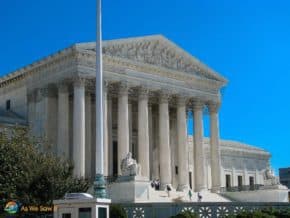
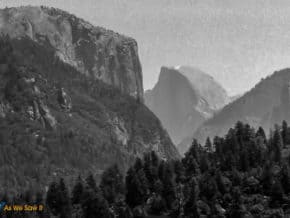
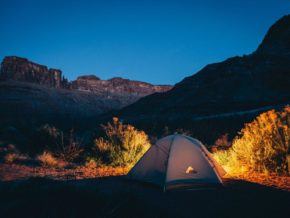
Hi Linda and Kate,
Great article!
For those folks traveling by RV or campervan, there is a campground called Cherry Hill Park located right off of I-95. It is the closest campground to DC. Cherry Hill Park even has a free shuttle service to the nearby public transportation to get into DC and back.
We have stayed there multiple times and it’s so cool to be in downtown DC all day and then be back at the campground in front of a fire at night!
Thanks!
Mike and Susan
Hi Mike and Susan,
Appreciate the great tip! Camping is a great way to travel economically. Their free shuttle is a super bonus.
Thanks!
Linda